From the desk of Rand Simmons
The meagre lighthouse all in white, haunting the seaboard, as if it were the ghost of an edifice that had once had colour and rotundity, dripped melancholy tears after its late buffeting by the waves. ~Charles Dickens, Little Dorrit
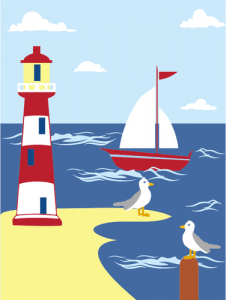
A lighthouse is … Although we often think of a tower with a bright light at the top, located on an important or dangerous waterway, lighthouses are quite varied in architecture. They had, and still have, two main purposes — to serve as navigational aids and to warn ships of dangerous areas.
Historical record tell us that one of the Seven Wonders of the Ancient World, Pharos located in Alexandria, Egypt, was the first lighthouse recorded in history, built around 280 BC and as tall as a 45-story building. An open fire at the top of the tower was the source of light.
(“Lighthouses: FAQ.” Fact Monster from Information Please, Sandbox Networks, Inc., Publishing as Fact Monster, www.factmonster.com/ipka/A0800631.html. Accessed 24 Mar. 2017.)
Following Independence from England, the newly formed U.S. Congress created the Lighthouse Establishment as an administrative unit of the federal government on 7 August 1789.
Benjamin Franklin, a United States founding father, is sometimes attributed with having said, “Lighthouses are more useful than churches.”
What Franklin actually wrote to his wife after narrowly escaping a shipwreck was, “The bell ringing for church, we went thither immediately, and with hearts full of gratitude, returned sincere thanks to God for the mercies we had received: were I a Roman Catholic, perhaps I should on this occasion vow to build a chapel to some saint, but as I am not, if I were to vow at all, it should be to build a light-house.”
(“A Quote from Memoirs of the Life and Writings of Benjamin Franklin.” Goodreads, Inc. Accessed 27 Mar. 2017.)
Not all safety/navigational lights are in lighthouses. There are signals, buoys, daymarks and light ships as well.
My own fascination with lighthouses began when as a child our family took short trips to the middle and southern Oregon coasts. We visited lighthouses on the Coquille River in Bandon; Umpqua River in Reedsport; and later, as an adult I explored the Yaquina Bay lighthouse in Newport.
So, recently when grubbing about among the State Library’s shelves of historic federal publications and coming across Light List Pacific Coast, United States, 1933 I naturally began leafing through the Oregon and Washington sections to see how many lighthouses I recognized.
(Light list including lights, fog signals, buoys, and daymarks. Pacific coast, United States, Canada, Hawaiian, and Samoan Islands / U.S. Department of Commerce, Lighthouse Service. Washington : U.S. G.P.O., 1933. Print: C 9.19:1933)
A short history
“The Aids to Navigation mission of the U. S. Coast Guard has a history dating back to the building and illumination of the first American lighthouse on Little Brewster Island in Boston Harbor in 1716. At first, because of the indifference of England, local or colonial governments had to shoulder the responsibility of making the waters safe for mariners.” Hence, the founding of the Lighthouse Establishment created by the U.S. Congress of the United States in 1789. Alexander Hamilton, Secretary of the Treasury, was its first administrator.
(Strobridge, Truman R. “Chronology of Aids to Navigation.” Historic Light Stations, United State Coast Guard, 21 Dec. 2016, www.uscg.mil/history/articles/h_USLHSchron.asp. Accessed 6 Mar. 2017.)
The first federal agency formally charged with responsibility for lighthouses was the Treasury Department.
- In 1852 Congress established the Lighthouse Board. The Lighthouse Board was responsible for issuing the List of lights and fog signals of the United States and the Dominion of Canada on the Pacific coast of North America, and of the United States on the Hawaiian, Midway, Guam, and Samoan Islands (titles vary) …
- In 1903 the Lighthouse Board was transferred to the newly created Department of Commerce and Labor where in June 1910 the Lighthouse Board was succeeded by the Bureau of Lighthouses.
- In 1939 the Bureau’s functions were transferred to the Coast Guard, a part of the Treasury Department, and now part of Homeland Security.
With each organizational shift the Light List continued to be published.
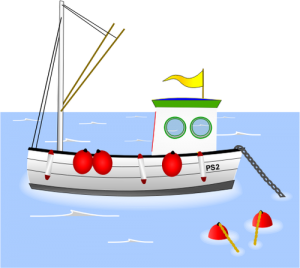 Currently, the Light List is published in 7 volumes each reflecting one of seven regions. The Pacific and Pacific Islands volume includes the eleventh (California, Nevada, Utah, and Arizona), thirteenth (Washington, Oregon, Idaho and Montana), fourteenth (Hawaii), and seventeenth (Alaska) districts. It contains a lists of lights, sound signals, buoys, day beacons, and other aids to navigation. As it has been from the beginning of The Light List, it is published by the Government Publishing Office, the official publisher of the federal government. Learn more.
Currently, the Light List is published in 7 volumes each reflecting one of seven regions. The Pacific and Pacific Islands volume includes the eleventh (California, Nevada, Utah, and Arizona), thirteenth (Washington, Oregon, Idaho and Montana), fourteenth (Hawaii), and seventeenth (Alaska) districts. It contains a lists of lights, sound signals, buoys, day beacons, and other aids to navigation. As it has been from the beginning of The Light List, it is published by the Government Publishing Office, the official publisher of the federal government. Learn more.
Light List is available online: Pacific Coast and Pacific Islands. Contemporary issues may be available either in print or microfiche and since 2002 they have been distributed to federal depository libraries (like us) only in microfiche. Check with the State Library’s public services staff if you need assistance.
Washington Lighthouses

“Cape” Disappointment
There are eighteen active lighthouses in the state, one of which serves as a museum. In addition, three are standing but inactive (one of these is now a museum), three were supplanted by automated towers, and two have been completely demolished. The Cape Disappointment Light was the first lighthouse in the state (lit in 1856) and is still active. It sits where the Columbia River meets the Pacific Ocean following its 1,243 mile journey.
On July 6, 1788, English fur trader John Meares (1756?-1809) named the northern side of the entrance to the Columbia River, Cape Disappointment. The name reflects Meares’ chagrin at not finding the Columbia River.
(William, Hanable S. “English Fur Trader John Meares Names Cape Disappointment on July 6, 1788.” Historylink.org, 2 Dec. 2003, (www.historylink.org/File/5621. Accessed 23 Mar. 2017.)
(The Lighthouses, Lighthouse Friends, Inc., lighthousefriends.com/pull-lights.asp. Accessed 27 Mar. 2017. Arranged by state.)
A list of Washington State lighthouses can also be found at “Historic Light Station Information & Photography.” on the U.S. Coast Guard Historian’s Office web site.
The history includes both active and deactivated lighthouses. Some entries point to photographs.
Washington Rural Heritage
The Washington State Library’s Washington Rural Heritage is a collaborative project that facilitates sharing of local history materials from libraries, museums, and private collections of citizens across Washington State. To date one hundred twenty-nine cultural institutions have participated in the project.
The Orcas Island Heritage Collection was a collaboration of the Orcas Island Public Library Orcas Island Historical Museum. One of the interesting stories in the collection is about the Pole Pass Light. Search the collection and you will find 19 entries.
Pole Pass Light
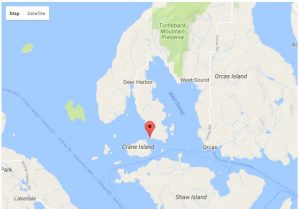
Courtesy LighthouseFriends.com
“Pole Pass, is a narrow rocky pass in Deer Harbor between Orcas and Crane islands. In the late 1800s and early 1900s steamboats hired someone to hold a light if they had to go through at night. Finally about 1940 a permanent light was constructed.”
(Geoghegan, James T. “Pole Pass Light.” Orcas Island Heritage, Washington State Library, 11 June 1914, http://bit.ly/2nGKT2C. Accessed 21 Mar. 2017. )
“In 1883 the captain of the mail boat S.S. LIBBY asked William Cadwell, a Pole Pass homesteader, to suspend a lantern at the pass to guide the steamer during its evening runs. In exchange for this service, the vessel provided William’s family with free transportation and shipment of produce grown on the Cadwell farm. In 1887 the federal government placed a larger lantern containing a red globe at the site. William manually lit this lantern every night which was fueled by kerosene to ensure the flame wouldn’t be extinguished during bad weather. After Cadwell’s death around 1890, son-in-law Robert McLachlan took over the role of light keeper. Then McLachlan’s son. Kirk, continued the lamp-lighting tradition by supervising the beacon from 1907 to 1949. At that point the U.S, Coast Guard replaced Orcas Island’s only navigational light with a blinker- which continues to operate today.”
(“History Corner [Newspaper Column].” Orcas Islander, bit.ly/2mR5Rb9 Accessed 21 Mar. 2017.)
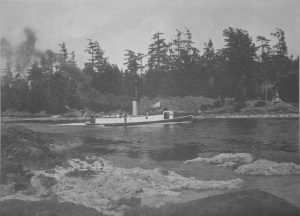
Pole Pass (Washington) 1909. Photograph by J. A. McCormick [Public domain], via Wikimedia Common
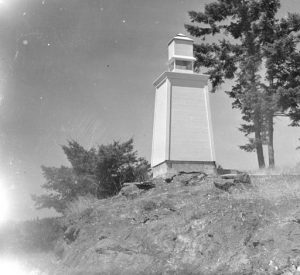
Pole Pass Light. Geoghegan, James T., 1869-1953, Orcas Island Heritage — James T. Geoghegan Collection
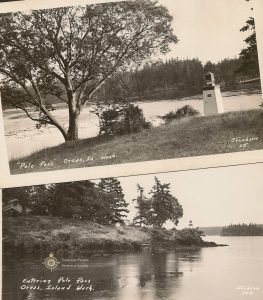
Pole Pass Light. Used by permission, Cherie Christensen, Saltwater People Historical Society.
“Watching the blinkers on a dark night brings back many memories to the old settlers still living near Pole pass. They recall shipwrecks in the old days and have a warm place in their hearts at the thoughtfulness of the lightkeepers through the years. They are glad, too, for the progress that brings new lights as they are needed.”
(McLachlan, Edith. “1883 ❖ POLE PASS LIGHT ❖.” Saltwater People Log, Saltwater People Historical Society, http://bit.ly/2o13aEf. Accessed 21 Mar. 2017. Original source: They Named it Deer Harbor, McLachlan, Edith. 1970.)
Irene Barfoot O’Neill, daughter of the light keeper on Obstruction Island provides insight into life in a lighthouse:
“All of these lights were fueled by kerosene (coal oil). If the flame was not carefully adjusted, the chimney would be smoked and the light not seen clearly, thus endangering the lives of those traveling on the boats which depended upon the light being visible for the required distance.
The lamp itself was much the same as an ordinary household lamp and chimney, but the outer glass protection globe was thick because of the magnification in the manufacturing process. As I remember, the round globes were about 10″ high by 8″ in diameter. The oil tank held enough to last seven days, requiring a trip once a week to refill the tank and clean the lamps. If a storm seemed imminent, father wouldn’t wait, especially in winter.
The only weather forecasting was done by reading the sky and cloud formations. Of course, the wind and tides were a consideration, as the only power was by oars or perhaps a sail …
The pay for this work wasn’t generous, but many times the $13.00 per month pay was our only cash income.
One of the highlights of our year was the semiannual visit of the lighthouse tender “Heather”, which brought oil, towels, extra chimneys, and other supplies which were stored on an 8′ by 8′ white-painted “oil house” near the beach. Oil came in wooden cases, with two five-gallon tins in each. When empty, these sturdy boxes and tins served many uses around the farm. With the top cut off and the sharp edges neatly hammered down, two of these tins sat of the back of our wood stove as a supply of hot water for dishes or whatever.”
(O’Neill, Irene Barfoot. 125 Years Olga: Memories and Potlucks: Orcas Island Heritage, Washington State Library, 10 June 2008, Washington Rural Heritage Orcas Collection. Accessed 24 Mar. 2017.)
Washington State Parks
Some lighthouses have become the property of and are managed by Washington State Parks:
Exploring Coastal Guardians at State Parks
In honor of National Lighthouse Day, August 7, 2016, Washington State Parks posted an article to their blog:
Exploring Coastal Guardians at State Parks | Adventure Awaits, WA, Washington State Parks and Recreation Commission, http://www.adventureawaits.com/201/Exploring-Coastal-Guardians-8-5-16. Accessed 12 Apr. 2017.
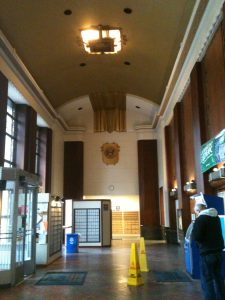
Interior Lobby, North Head Lighthouse, Ilwaco, Washington
From our state agency documents collection
The Washington State Library is the depository of state agency publications published in many different formats. Publications from 1889 onward provide current and historical information about State government. They are a resource for research into Washington’s past and they are a cornerstone for Washington’s future. The State Library also maintains a system of depository libraries geographically spread across the state.
McCroskey, Lauren. Washington State Parks Historic Properties Condition Assessment Phase Ii: Eastern Region. Olympia, Wash.: Washington State Parks and Recreation Commission, 2000. Print: WA 719.3 P231was s23 2000.
Conconully State Park; Dalles Mountain Ranch, Horsethief Lake State Park; Northrup Canyon, Steamboat Rock State Park; Ohme Gardens State Park; Olmstead Place Park; Fort Simcoe State Park; Riverside State Park.
McCroskey, Lauren. Washington State Parks Historic Properties Condition Assessment Phase Ii: Northwest Region. Olympia, Wash.: Washington State Parks and Recreation Commission, 2000. Print: WA 719.3 P231was s22 2000.
Burrows Island lighthouse; Fort Casey State Park; Cowan Ranch, Hoko River State Park; Fort Flagler State Park; Lime Kiln Point State Park; Old Fort Townsend State Park; Patos Island lighthouse; Point Wilson lighthouse, Fort Worden State Park; O’Brien-Riggs property, Rockport State Park; Rothschild house. Burrows Island lighthouse; Fort Casey State Park; Cowan Ranch, Hoko River State Park; Fort Flagler State Park; Lime Kiln Point State Park; Old Fort Townsend State Park; Patos Island lighthouse; Point Wilson lighthouse, Fort Worden State Park; O’Brien-Riggs property, Rockport State Park; Rothschild house.
McCroskey, Lauren. Washington State Parks Historic Properties Condition Assessment Phase Ii: Southwest Region. Olympia, Wash.: Washington State Parks and Recreation Commission, 2000. Print: WA 719.3 P231was s28 2000.
Battleground Lake State Park; Fort Canby State Park; Fort Columbia State Park; Grays Harbor State Park; Pe Ell Section House; Siminiski House; Rainbow Falls State Park.
McCroskey, Lauren. Washington State Parks Historic Properties Condition Assessment Phase Ii: Technical Specifications & Technical Drawings. Olympia, Wash.: Washington State Parks and Recreation Commission, 2000. Print: WA 719.3 P231was s24 2000.
North Head Lighthouse: Established 1898. Olympia, WA: Washington State Parks and Recreation Commission, 2000. Print: WA 719.3 P231nor h 2012.
![I, Jonathan Zander [GFDL (http://www.gnu.org/copyleft/fdl.html), CC-BY-SA-3.0 (http://creativecommons.org/licenses/by-sa/3.0/) or CC BY-SA 2.5 (http://creativecommons.org/licenses/by-sa/2.5)], via Wikimedia Commons Photo of the Mukilteo Lighthouse](https://blogs.sos.wa.gov/library/wp-content/uploads/2017/03/Mukilteo_Light-300x225.jpg)
Mukilteo Lighthouse by “Jon Zander(Digon3)” courtesy Wikimedia Commons
From our Northwest collection – a sampling of publications on lighthouses
The State Library preserves and provides access to a comprehensive collection of information on the geographic area we now know as Washington State and the other identified regions of the Pacific Northwest: Oregon, Idaho, and Western Montana. The collection also contains works on Alaska, British Columbia and the Yukon Territory to reflect our shared histories.
Aliberti, Ray. Lighthouses Northwest: The Designs of Carl Leick. Coupeville, Wa. (P.O. Box 827, Coupeville 98239-0827): Aliberti, 2000. Print: NW 387.155 ALIBERT 2000; Historic Research and Rare Collection copies available for in-library use only.
Bache, Hartman. Early West Coast Lighthouses: Eight Drawings and Paintings. San Francisco: Book Club of California, 1964. Print: Historic Research and Rare Collection copies for in library use only.
Ehlers, Chad, and Jim Gibbs. Sentinels of Solitude: West Coast Lighthouses. San Luis Obispo, CA: EZ Nature Books, 1989. Print: R 387.155 EHLERS 1981, in-library use only.
Groth, Karen N. Westport’s Masterpiece: Building the Grays Harbor Lighthouse, 1897-98. Portland, Or: Nicholson Press, 2010. Print: NW 387.155 GROTH 2010; Historic Research copy available for in-library use only.
Hanable, William S. Lighthouses and Lifesaving on Washington’s Outer Coast: 15 Historic Postcards. Charleston, SC: Arcadia Pub, 2009. Print: NW 387.155 HANABLE 2009; Historic Research copy available for in-library use only.
Leffingwell, Randy, and Pamela Welty. Lighthouses of the Pacific Coast: Your Guide to the Lighthouses of California, Oregon, and Washington. Minneapolis: Voyageur Press, 2010. Print: NW 387.155 LEFFING 2000; Historic Research copy available for in-library use only.
Lighthouses of the Northwest. Howes Cave, N.Y: Hartnett House Map Publishers, 2005. Print: NW 387.155 HARTNET 2000; Historic Research copy available for in-library use only.
Lucero, Donella J, and Nancy L. Hobbs. Guardian of the Columbia River: Cape Disappointment Lighthouse, 1856-2006. Long Beach, Wash.?: Willapa Communications, 2006. Print: NW 387.155 LUCERO 2006; Historic Research copy available for in-library use only.
Lucero, Donella J, and Nancy L. Hobbs. North Head Lighthouse. Long Beach, Wash.?: Willapa Communications, 2006. Print: NW 387.155 LUCERO 2006; Historic Research copy available for in-library use only.
McCurdy, James G. Cape Flattery and Its Light: Life on Tatoosh Island. Seattle: Shorey Book Store, 1966. Print: R OVERSIZ 387.155 MCCURDY 1966 in-library use only.
McDaniel, Nancy L. A Sound Defense: Military Sites, Lighthouses, and Memorials of Puget Sound. Chimacum, Wash: Nancy L. McDaniel, 2013. Print: NW 917.9704 MCDANIE 2013; Historic Research copy available for in-library use only.
Nelson, Sharlene P. Umbrella Guide to Washington Lighthouses. Friday Harbor, WA (PO Box 1460, Friday Harbor 98250-1460): Umbrella Books, 1990. Print: NW 387.155 NELSON 1990; Historic Research copy available for in-library use only.
Roberts, Bruce, and Ray Jones. Lighthouses of Washington: A Guidebook and Keepsake. Guilford, Conn: Insiders’ Guide, 2006. Print: NW 387.155 ROBERTS 2006
Roberts, Bruce, and Ray Jones. Pacific Northwest Lighthouses: Oregon to the Aleutians. Old Saybrook, Conn: Globe Pequot Press, 1997. Print: NW 387.155 ROBERTS 1997; In-library use only copy also available.
Survey Correspondence, Washington Territory: Records of the Bureau of Land Management. Washington? D.C.: The Bureau?, 1980. Microfilm: NW MICRO 333.16 SURVEY 188-?, 2 reels, for in-library use only.
Washington Lighthouses: Photographic Essay. Tacoma, WA: Smith-Western Co, 2000. Print: R 387.155 WASHING 200-?, in-library use only.
“Washington Secretary of State – Legacy Washington – Washington History: Historical Maps Detail.” Washington Secretary of State – Legacy Washington – Washington History: Historical Maps Detail, U.S. Corp of Engineers, 1881, www.sos.wa.gov/legacy/maps/maps_detail.aspx?m=22. Accessed 21 Mar. 2017.
In print: Symons, T. W. (Thomas William), 1849-1920. [Washington, D.C. : Corps of Engineers, U.S. Army], 1881. In library use only. Request ahead of time.
Symons, T. W. (Thomas William), 1849-1920. [Washington, D.C.] : Office of the Chief of Engineers, U.S. Army, 1885. In library use only. Request ahead of time.
Other Resources
Society, Saltwater People Historical. “Saltwater People Log, Saltwater People Historical Society, 6 Nov. 2013, http://bit.ly/2n4v1UE. Accessed 21 Mar. 2017.
Strobridge, Truman R. “CHRONOLOGY OF AIDS TO NAVIGATION.” Historic Light Stations, United State Coast Guard, 21 Dec. 2016, www.uscg.mil/history/articles/h_USLHSchron.asp. Accessed 6 Mar. 2017. Excellent chronology and list of resources.
“Washington Secretary of State – Legacy Washington – Washington History: Historical Maps Detail.”
Washington Secretary of State – Legacy Washington – Washington History: Historical Maps Detail, U.S. Corp of Engineers, 1881,
www.sos.wa.gov/legacy/maps/maps_detail.aspx?m=22. Accessed 21 Mar. 2017.
Just for Fun
 How to purchase a lighthouse: “Coast Guard History.” USCG: Frequently Asked Questions, U.S. Coast Guard, Historian’s Office, www.uscg.mil/history/faqs/Lighthouse_Keepers.asp. Accessed 22 Mar. 2017.
How to purchase a lighthouse: “Coast Guard History.” USCG: Frequently Asked Questions, U.S. Coast Guard, Historian’s Office, www.uscg.mil/history/faqs/Lighthouse_Keepers.asp. Accessed 22 Mar. 2017.
 How to become a lighthouse keeper: “Coast Guard History.” USCG: Frequently Asked Questions, U.S. Coast Guard, Historian’s Office, www.uscg.mil/history/faqs/Lighthouse_Keepers.asp. Accessed 22 Mar. 2017.
How to become a lighthouse keeper: “Coast Guard History.” USCG: Frequently Asked Questions, U.S. Coast Guard, Historian’s Office, www.uscg.mil/history/faqs/Lighthouse_Keepers.asp. Accessed 22 Mar. 2017.
 “Stay at a Washington Lighthouse.” Stay at a Washington Lighthouse, United States Lighthouse Society, www.stayatawashingtonlighthouse.org/. Accessed 21 Mar. 2017.
“Stay at a Washington Lighthouse.” Stay at a Washington Lighthouse, United States Lighthouse Society, www.stayatawashingtonlighthouse.org/. Accessed 21 Mar. 2017.
Need assistance finding state or federal publications? Contact our Ask a Librarian service.
The following State Library staff contributed to this article: Sean Lanksbury, Pacific Northwest and Special Collections Librarian, Evan Robb, Digital Repository Librarian; Nikki Chiampa, Digital Projects Librarian.

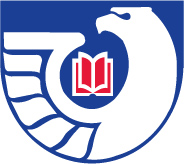
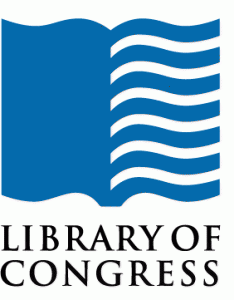







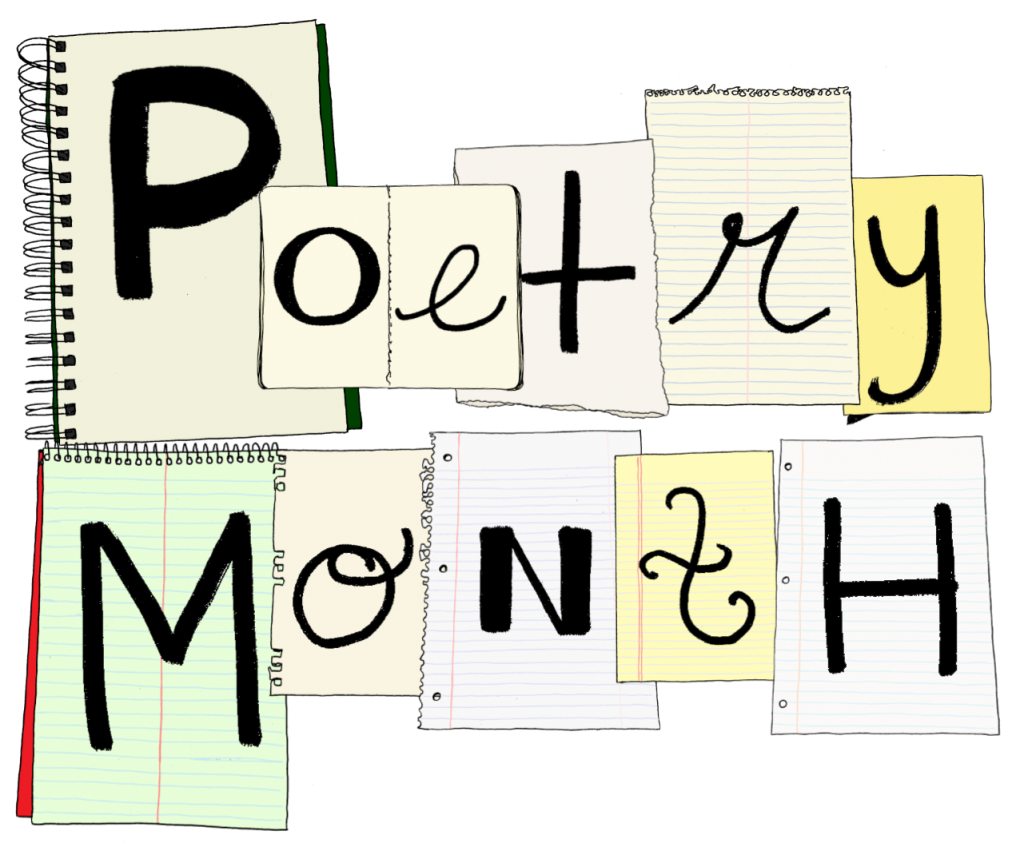 Every year I look forward to April because it’s National Poetry Month. It is my favorite time for programming in the Institutional Library Services branches. The talent I see each year is at time overwhelming. It is a labor of love. We arrange workshops, presentations, and open mics and in return we get to listen to and read truly amazing poetry.
Every year I look forward to April because it’s National Poetry Month. It is my favorite time for programming in the Institutional Library Services branches. The talent I see each year is at time overwhelming. It is a labor of love. We arrange workshops, presentations, and open mics and in return we get to listen to and read truly amazing poetry.
 Currently, the Light List is published in 7 volumes each reflecting one of seven regions. The Pacific and Pacific Islands volume includes the eleventh (California, Nevada, Utah, and Arizona), thirteenth (Washington, Oregon, Idaho and Montana), fourteenth (Hawaii), and seventeenth (Alaska) districts. It contains a lists of lights, sound signals, buoys, day beacons, and other aids to navigation. As it has been from the beginning of The Light List, it is published by the Government Publishing Office, the official publisher of the federal government.
Currently, the Light List is published in 7 volumes each reflecting one of seven regions. The Pacific and Pacific Islands volume includes the eleventh (California, Nevada, Utah, and Arizona), thirteenth (Washington, Oregon, Idaho and Montana), fourteenth (Hawaii), and seventeenth (Alaska) districts. It contains a lists of lights, sound signals, buoys, day beacons, and other aids to navigation. As it has been from the beginning of The Light List, it is published by the Government Publishing Office, the official publisher of the federal government. 





![I, Jonathan Zander [GFDL (http://www.gnu.org/copyleft/fdl.html), CC-BY-SA-3.0 (http://creativecommons.org/licenses/by-sa/3.0/) or CC BY-SA 2.5 (http://creativecommons.org/licenses/by-sa/2.5)], via Wikimedia Commons Photo of the Mukilteo Lighthouse](https://blogs.sos.wa.gov/library/wp-content/uploads/2017/03/Mukilteo_Light-300x225.jpg)
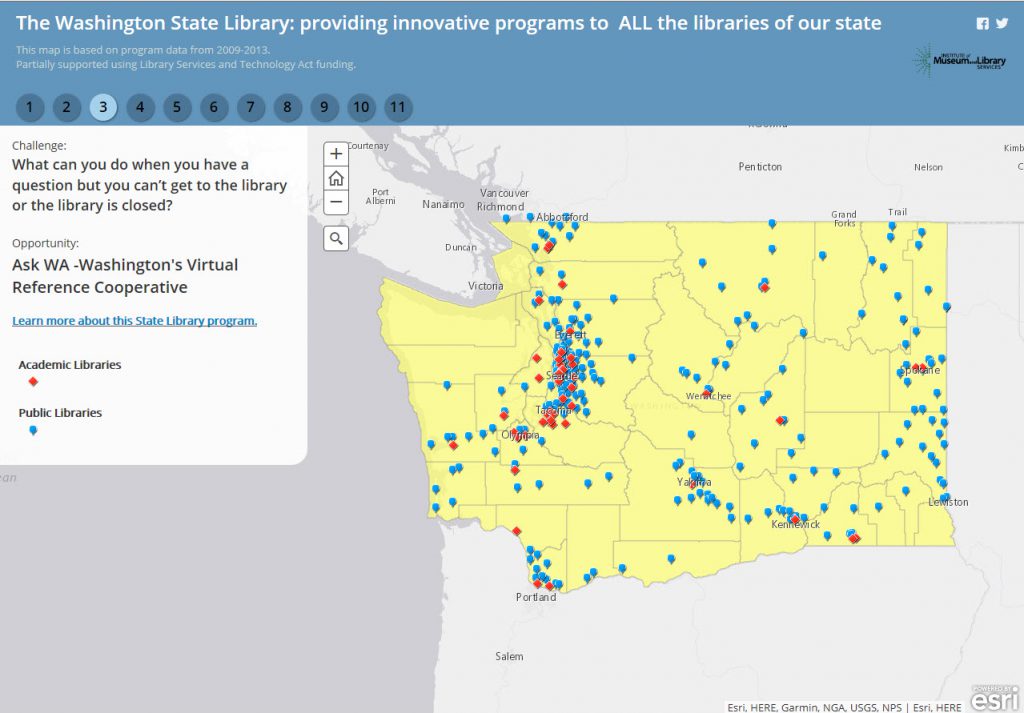
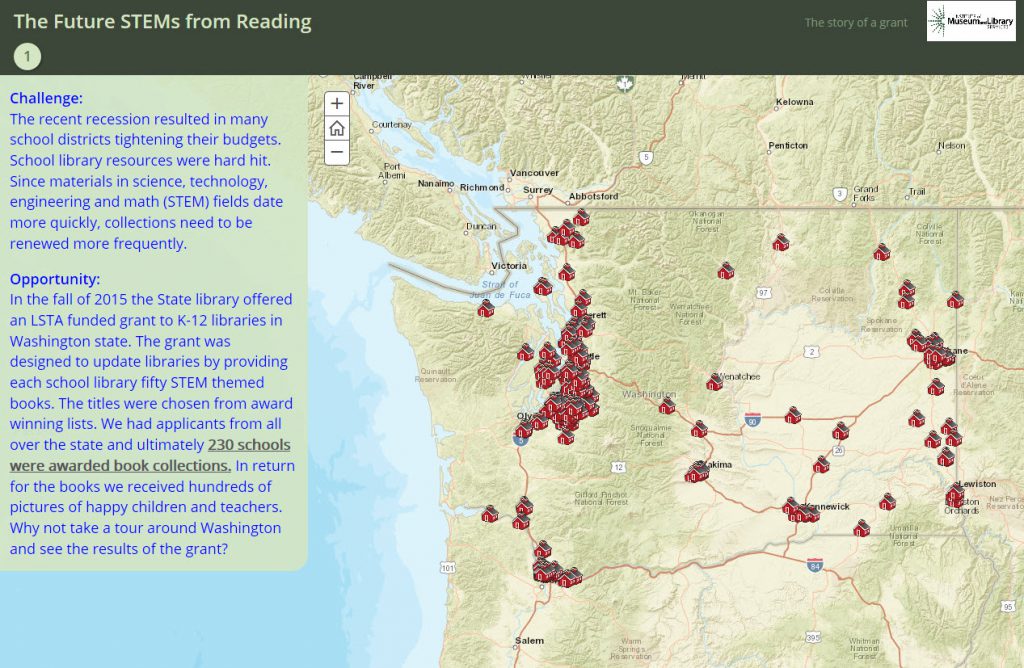
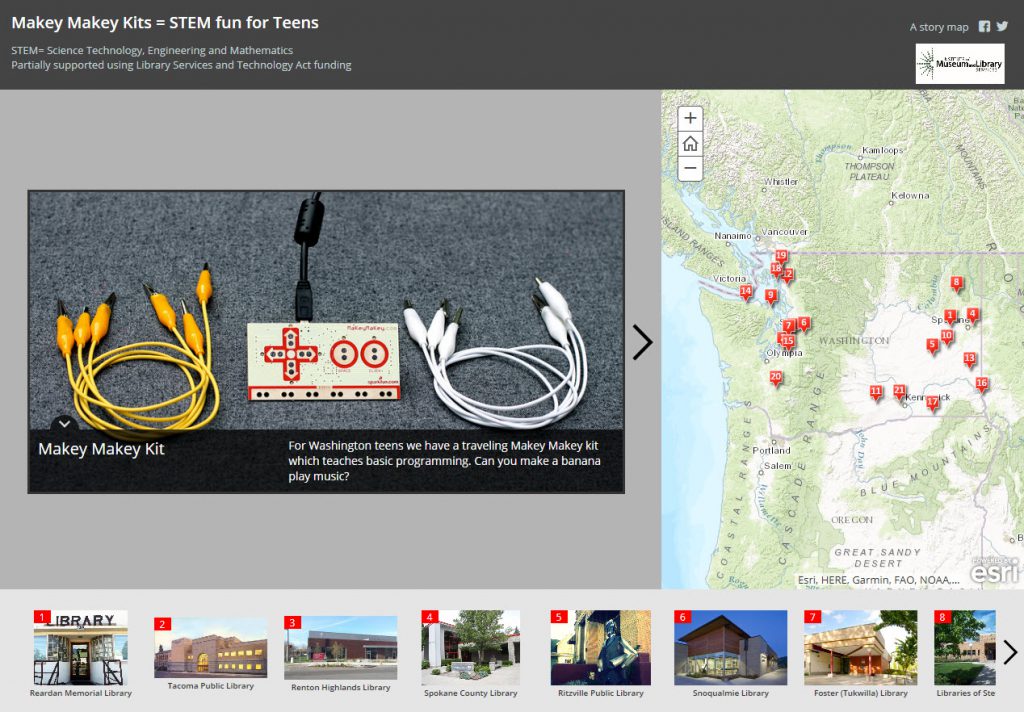
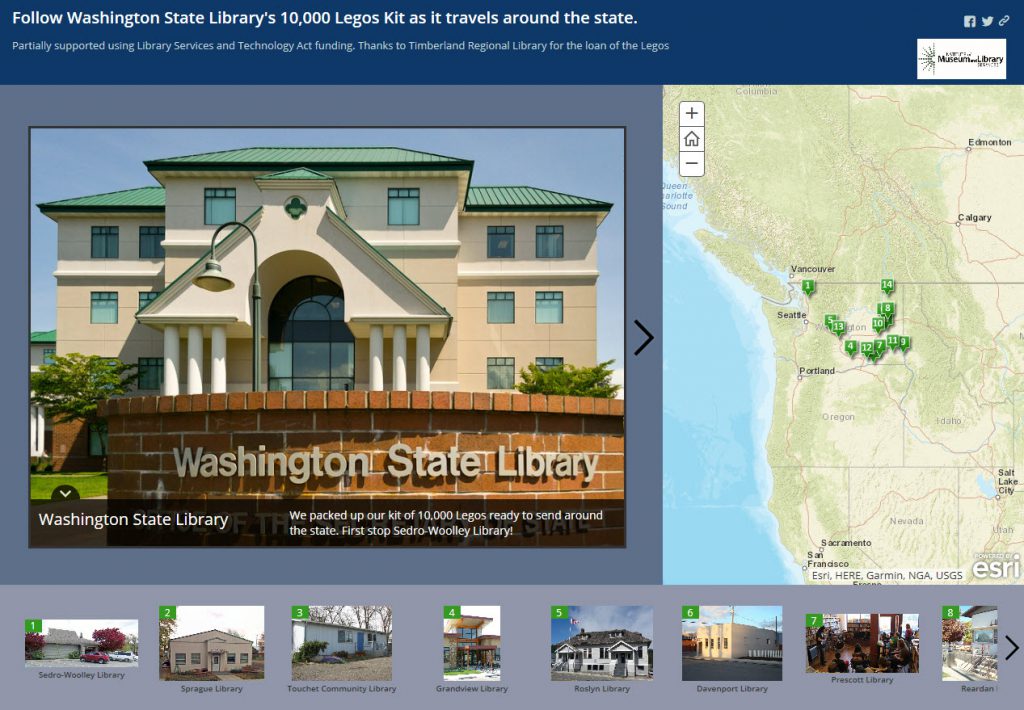
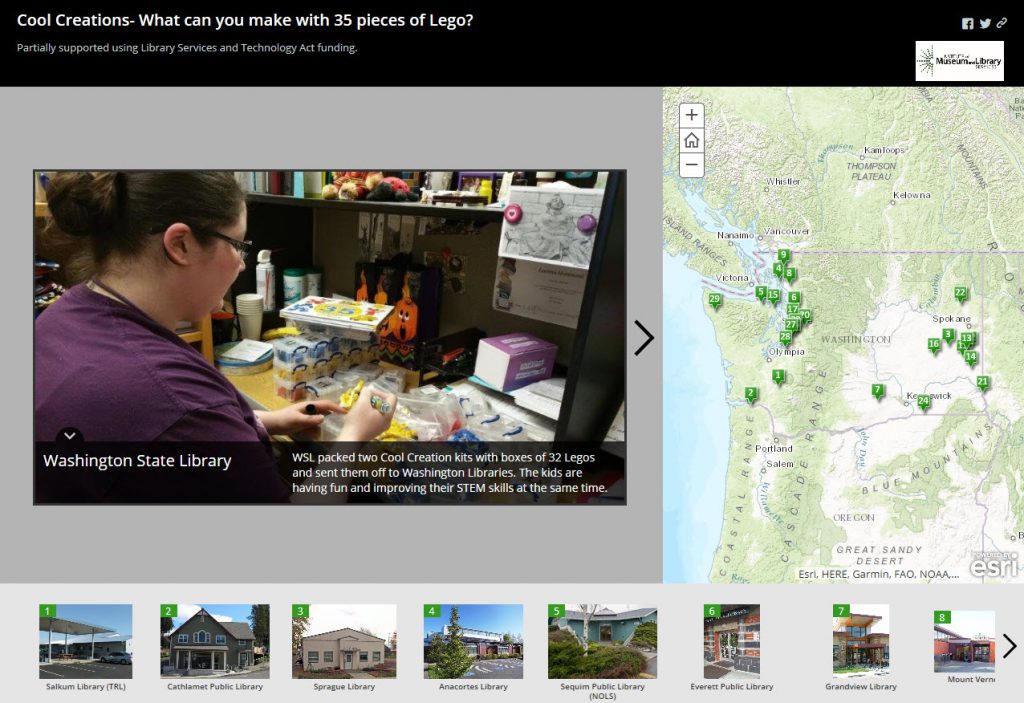


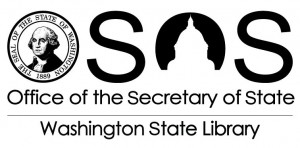
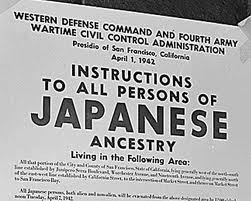
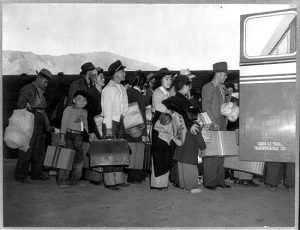


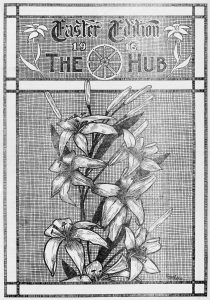 Foster were “laid out” by Frank Nehring, whom they were attempting to arrest. Even The Daily Hub’s publisher, M.E. Cue, was tried in court multiple times and charged in 1916 for throwing a pig of linotype metal at Joe Lucas, a local theater manager.
Foster were “laid out” by Frank Nehring, whom they were attempting to arrest. Even The Daily Hub’s publisher, M.E. Cue, was tried in court multiple times and charged in 1916 for throwing a pig of linotype metal at Joe Lucas, a local theater manager.